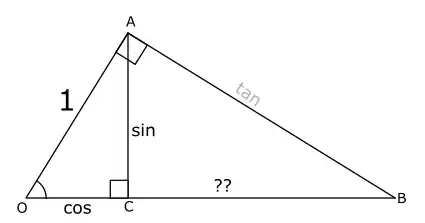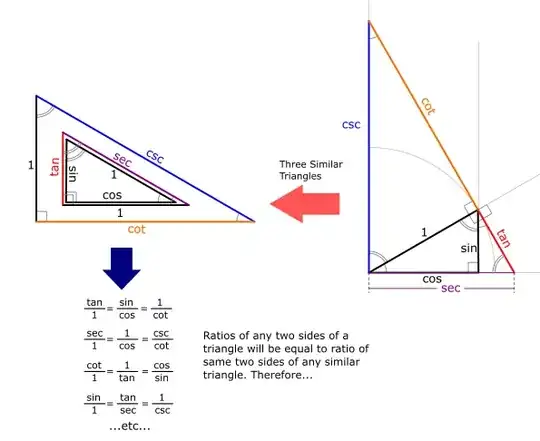I've seen a lot of "proofs" for this - but they all somehow revolve around the definition of $tan(x)$ being $\frac{opposite}{adjacent}$. I am coming from the standpoint of being unconvinced that this is true, while looking at the following diagram:
Forgetting for a minute that $\overline{AB}$ is defined as the "tangent" - How can I geometrically prove that $\overline{AB}$ is really $\frac{opposite}{adjacent}$ or $\frac{sin}{cos}$?
I believe this would also probably not be able to avoid the fact that $\overline{OB}$ is cosecant. I likewise can't probe this (hope I can once $tan(\theta)$ is clear...

